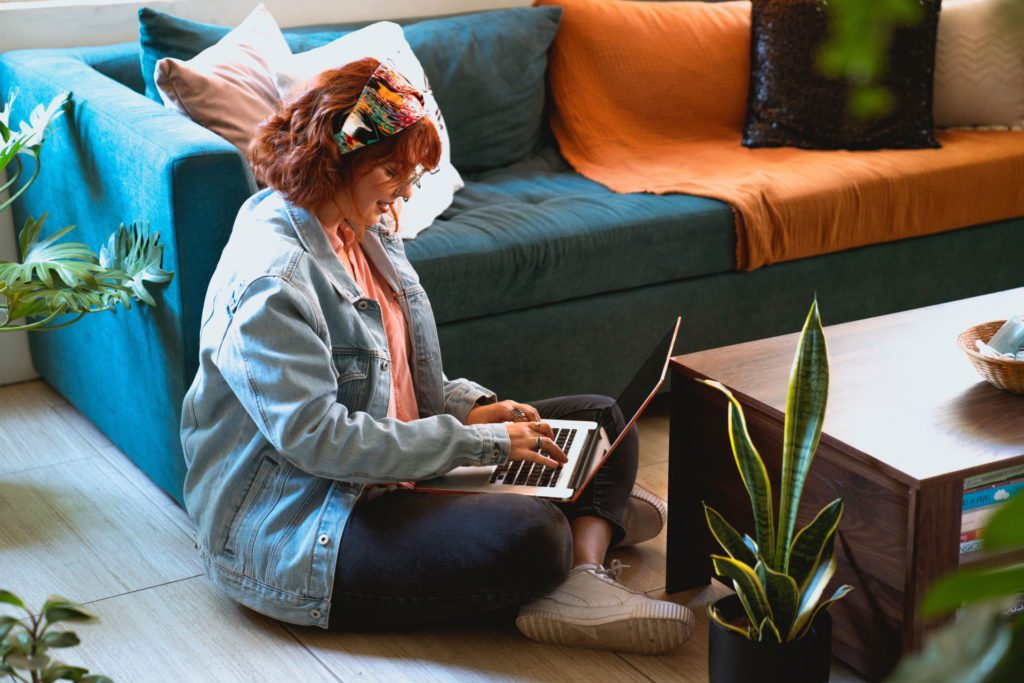In our post-COVID world, working from home has become the new normal, and we are left with a gap in our understanding, processes & policies… When your workplace is all of a sudden only 10 metres from your bedroom, bathroom, kitchen and everything in between… What does Workplace, Health & Safety mean anymore?!
What is considered the workplace when it goes from a single central shared location to as many locations as you have staff, once those staff start working from home??
Do WH&S policies still apply when you work from home? Does your dog have to abide by them?
At Codex, we have always supported flexible working arrangements – which has stood us in good stead given it’s become a necessity in the COVID-age – because we believe that flexibility promotes a work environment that is healthy, safe and productive. Our people have freedom of choice as to whether they work from home, on-site with our clients, or from our offices; so long as our capacity for collaboration and delivery remains unaffected.
So what does WH&S mean when you work from home?
At Codex, we’ve boiled it down to five key focus areas that we’ve developed over time and encouraged our entire team to adopt:
1. Get your setup right!
- Spending 40 hours a week hunched over your laptop on your couch is going to cause some real issues! Make sure you set yourself up with a home workstation that takes both comfort and function into consideration. Try restoring some natural range of motion to your day by setting up a flexi-desk, giving yourself the freedom to move between sitting and standing throughout your work day.
- Pro tip: It doesn’t need to be fancy – a couple of extra books under the monitor to bring it up to eye level can be a real back saver!
2. Separate your home workstation from the rest of your home.
- Not all of us are able to do this spatially (e.g. a dedicated home office) but for those limited by space, make sure you design a workstation that looks and more importantly feels different to the rest of your home. That way, come COB when you step away from your workstation, both your body and brain will recognise that separation.
- Dr. Adam Fraser is a researcher and author of a book about ‘third spaces’ – the space that exists between what we are doing and what we are about to do, and the small rituals that can help us switch between different parts of our lives. Dr. Fraser suggests that switching from work to home life doesn’t necessarily need a physical space ritual, but could be effectively managed with something as simple as walking around the block after work, switching into a new set of clothes, or listening to your favourite music.
- However you choose to separate your workspace and work time away from the rest of your home life, just make sure that your transition includes the three essential features: rest; reflect; and reset.
3. Safety first & always
- Though they may seem worlds apart, the home can be just as hazardous as the workplace (looking at you, toddler parents!) – so safety still needs to be a priority when working from home.
- Start with the simple things – clearing trip hazards, familiarising yourself with your building’s evacuation plans (even worth getting your own small extinguisher for that time you left the pan on?) and setting up your electrical components correctly. Ensure you are mindful of having non-work related people entering your workstation (your family members or housemates) and the disruptions to safety that may bring!
4. Take a break! … KitKat optional.
- It might seem as though you would be more inclined to take breaks while working from home with the couch and the fridge just metres away… but research suggests that without natural disruptions around the office, longer trips to meeting locations, and structured out-of-office break/start/finish times, we are actually more inclined to stay desk/computer-bound whilst WFH.
- First & foremost – have a firm plan for the start and finishing time for your day. Of course this won’t always go to plan, but it pays to work towards it! Secondly, take both structured & unstructured breaks throughout the day – for meals, bathroom trips, and moments of mindfulness.
- Pro tip: Try setting an alarm for every half hour of the working day. On the first alarm of each hour, take a 1 minute break to stretch the legs and move the spine. On the second of each hour, take a 5 minute break to fill the water bottle and walk around. Your improved blood flow and increased productivity will thank you!
5. Connect with nature.
- Bring the outside, in! Ever heard of biophilia? It’s a fancy word that describes the innate connection that humans have with all life and the natural environment. It’s primarily used to refer to design principles (urban, interior etc) that promote the use of natural elements for their benefits. Biophilic interior design, or put simply – putting plants in buildings – has been shown to increase occupants’ cognitive function, stabilise mood, boost productivity, and improve both mental and physical health. Those pot plants in your office aren’t just there to look nice – they are there to help you do your job well! So make sure your home office or work station is adequately decked out with greenery to help with your efficiency!
- Or if you have the option, take the inside, out! Sunlight, fresh air, chirping birds… why wouldn’t you take your office outside if you can?! WFH has given many of us the opportunity to break up our days into more than just wake up, commute, work, commute, sleep, repeat. Jumping on a call or online meeting? Move yourself outside for some direct sunlight. Having writer’s block? Take a 15 minute break and go ground your feet in your garden or local park. Watch the words flow when you get back to the screen!

6. Check in with your WFH staff and their WFH set ups!
Yes, we said 5… but this cheeky #6 is for the employers rather than the employees:
- We know we don’t need to tell you to check in on your staff, but have you ever considered checking in on their WFH arrangements? Ask for a photo of their set up, or at the very least ask them a few questions about it – taking into consideration the rest of the top 5. How’s their home office set up? Do they need a monitor? A flexi-desk? A safety review? An indoor plant? Look after your employees, even when they are in their home office, and they will look after you!
We hope that you found these useful, and continue to make the most out of your time WFH – it really is an amazing opportunity to focus on the health part of Workplace Health & Safety.




